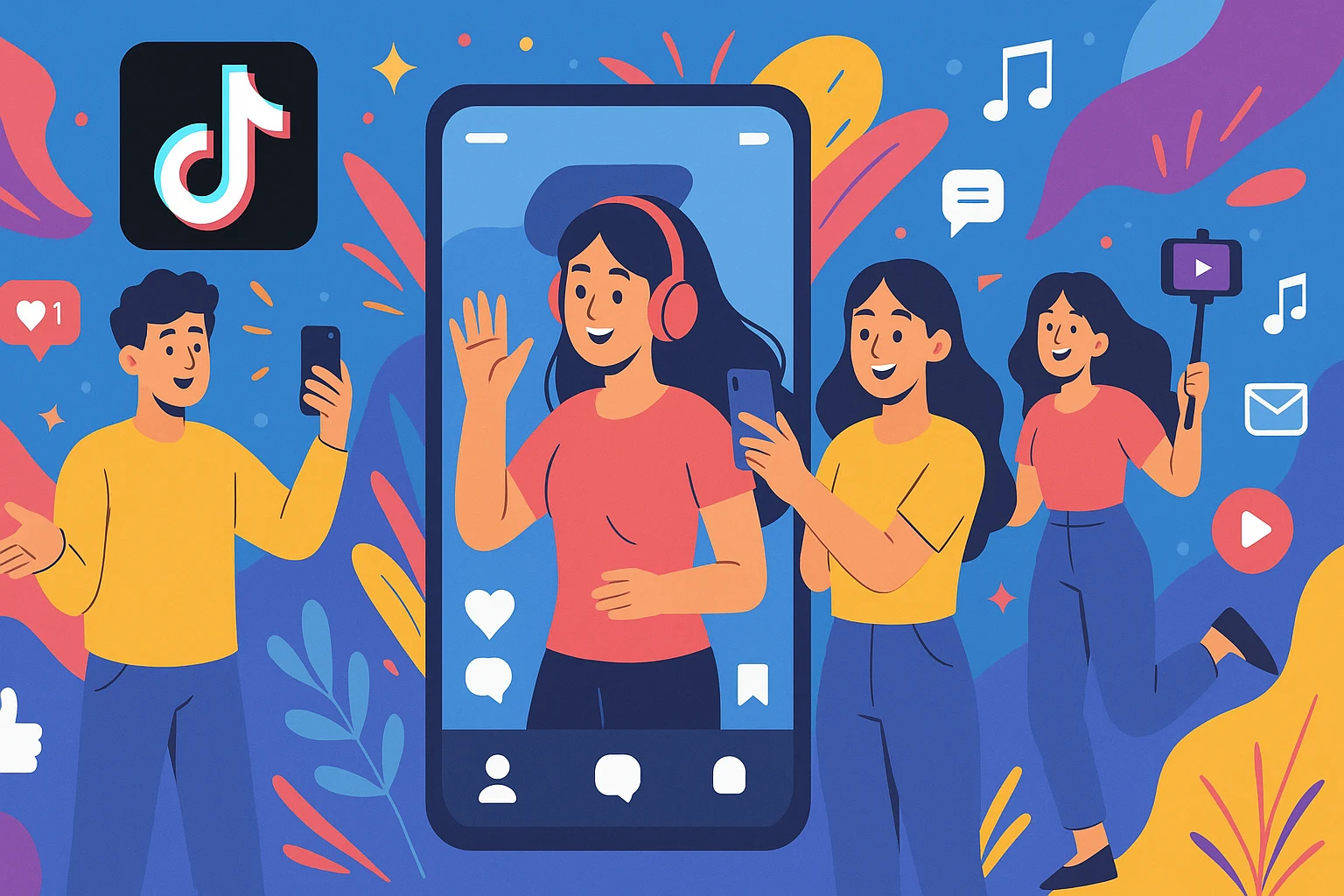The Rise of TikTok Influencers: How Creators Are Changing Digital Marketing
TikTok influencers are rewriting the rules of marketing. Here's how they're reaching millions and why brands follow.

TikTok started as a fun app for dancing teens. Today, it’s a force in online marketing.
Influencers on TikTok aren’t just getting views. They’re shaping how people shop, what they watch, and even how they think. This change is huge for brands, both big and small.
What Makes TikTok Different
TikTok isn’t like Instagram or YouTube.
It’s fast. Videos are short. You scroll and see something new every few seconds.
The app learns what you like. It shows you videos that keep you watching. This makes it easy for unknown people to go viral. You don’t need millions of followers. You just need a good video.
This helps small creators get big fast. It also helps brands reach people in new ways.
Who Are TikTok Influencers?
A TikTok influencer is someone who makes videos that people enjoy and trust.
They could be a 17-year-old reviewing snacks. Or a mom showing how she packs her kids’ lunches. Or a guy giving tips on saving money.
Some have millions of followers. Others only have a few thousand. But even small accounts can have a big impact if people care about what they say.
TikTok influencers often feel more “real” than other social media stars. They shoot videos in their bedrooms. They speak like normal people. That makes followers feel close to them. It also makes followers trust them.
Why Brands Are Paying Attention
TikTok has more than 1 billion users. Most are under 30. That’s a group many brands want to reach.
Old ways of advertising don’t work well with young people. They skip ads. They don’t trust celebrities. They want real people.
That’s where TikTok influencers come in. They know how to talk to their fans. They know what gets views. And they can make a product seem cool without sounding like a sales pitch.
Some brands now spend more on TikTok influencers than they do on TV ads. And it’s working.
What Influencer Deals Look Like
Brands pay influencers in different ways.
Some give free stuff. Others pay cash for a post or a series of posts. Big creators can make thousands of dollars from one video.
Some brands let influencers create whatever they want. Others give them scripts or guidelines.
But the best posts don’t feel like ads. They feel like tips from a friend.
That’s why good influencers are careful. They don’t say yes to every deal. If they push bad products, they lose trust.
Types of Content That Work
Certain types of videos do better than others:
- Product demos: “Watch me try this makeup” or “Let’s test this phone charger.”
- Tips and hacks: “3 ways to clean your shoes with stuff at home.”
- Before and afters: “Here’s my skin before using this serum… and here’s one week later.”
- Storytimes: “This is how I found the best phone plan ever.”
- Challenges: A brand might start a trend and ask creators to join in.
Good TikTok content is short, fun, and easy to copy. That’s why trends catch on fast.
Small Businesses Are Joining In
It’s not just big brands working with TikTok influencers. Small shops are getting in too.
Say you sell candles. You could send a few to a creator who loves home decor. If they post a video lighting one, and it takes off, your sales could jump overnight.
This kind of exposure used to cost thousands in ad fees. Now it might cost you just a few candles.
Some small shops even grow only through TikTok. They don’t use other ads. They rely on videos and word-of-mouth from fans.
The Power of Trust
TikTok influencers work because people trust them.
That trust doesn’t come from being perfect. It comes from being real.
When someone shares both wins and fails, fans listen. When they say, “This shampoo changed my hair,” people believe it more than a fancy ad ever could.
That trust is worth a lot. But it’s also fragile.
If an influencer lies or hides a paid deal, fans notice. And once trust breaks, it’s hard to get back.
That’s why smart influencers stay honest. They mark ads clearly. They only work with brands they like. They treat their fans like friends, not customers.
How Brands Pick Influencers
Big follower counts look good, but they’re not everything.
Brands also look at:
- Engagement: Do fans comment, like, and share?
- Tone: Does the creator’s style match the brand?
- Past posts: Have they worked with other brands before? Did those posts do well?
- Authenticity: Do they seem real? Do they care about what they share?
Micro-influencers (people with 10K–100K followers) often have better results than mega stars. Their fans are more loyal. Their videos feel more personal.
Risks and Red Flags
There are downsides too.
Some influencers fake stats. They buy followers or boost views with bots. That’s why brands check for real engagement, not just numbers.
Others get into drama. One bad video can hurt a brand’s image. Companies now look at a creator’s full history before signing a deal.
There’s also the risk of burnout. TikTok moves fast. Creators feel pressure to post every day. Some get tired or run out of ideas.
Still, most agree the rewards are worth it.
What’s Next?
TikTok isn’t slowing down.
The app keeps adding tools for creators. It’s testing new ways to shop right in the app. And it’s working to keep users hooked longer.
That means influencers will matter even more. And brands will keep paying for their reach.
We may see more creators launching their own products. Or teaming up to build their own brands.
One thing’s clear: TikTok isn’t just for laughs anymore. It’s where trends start. It’s where trust builds. And it’s where the next wave of marketing is already happening.